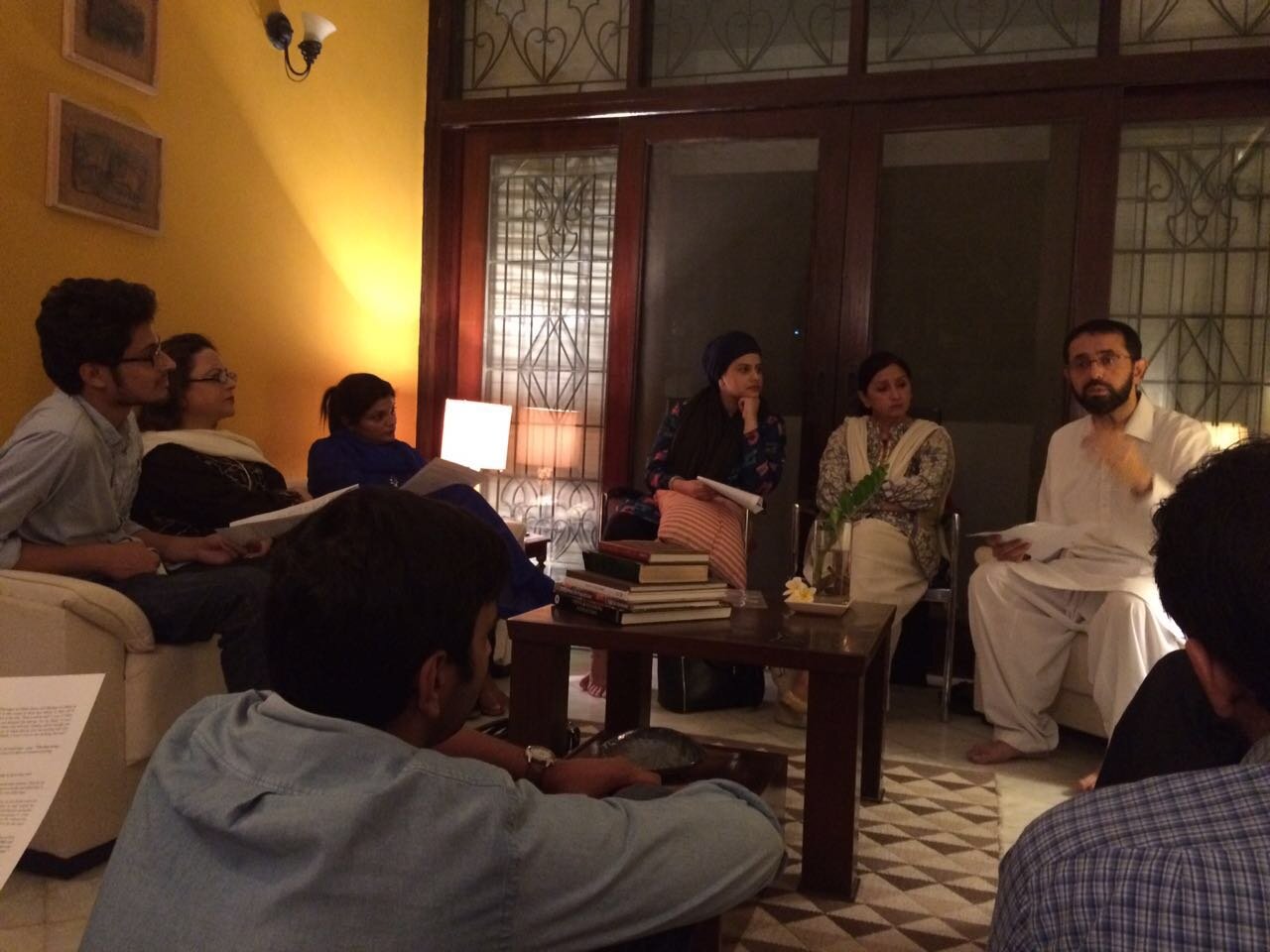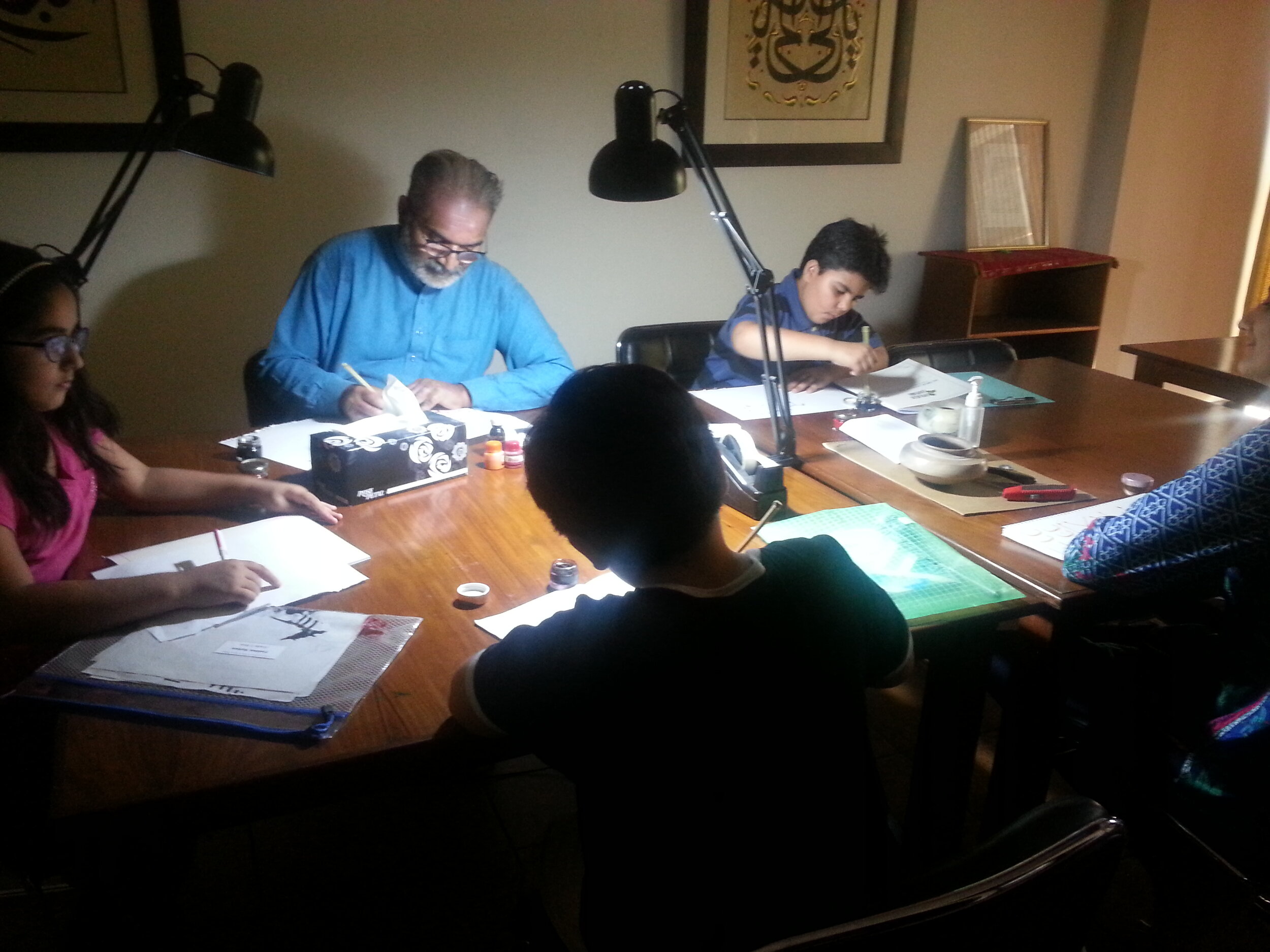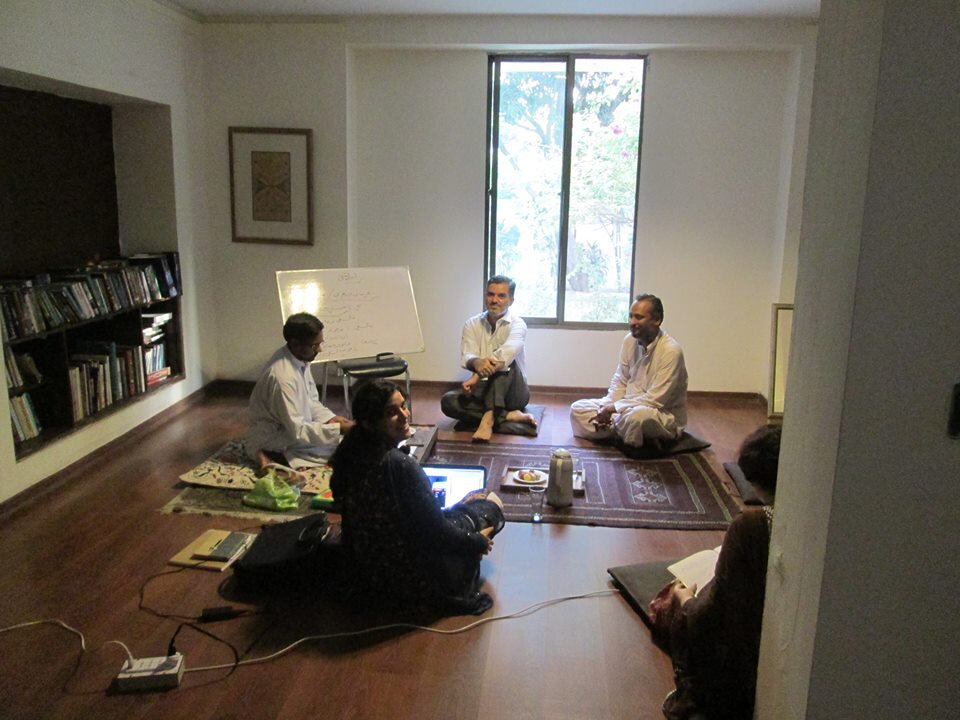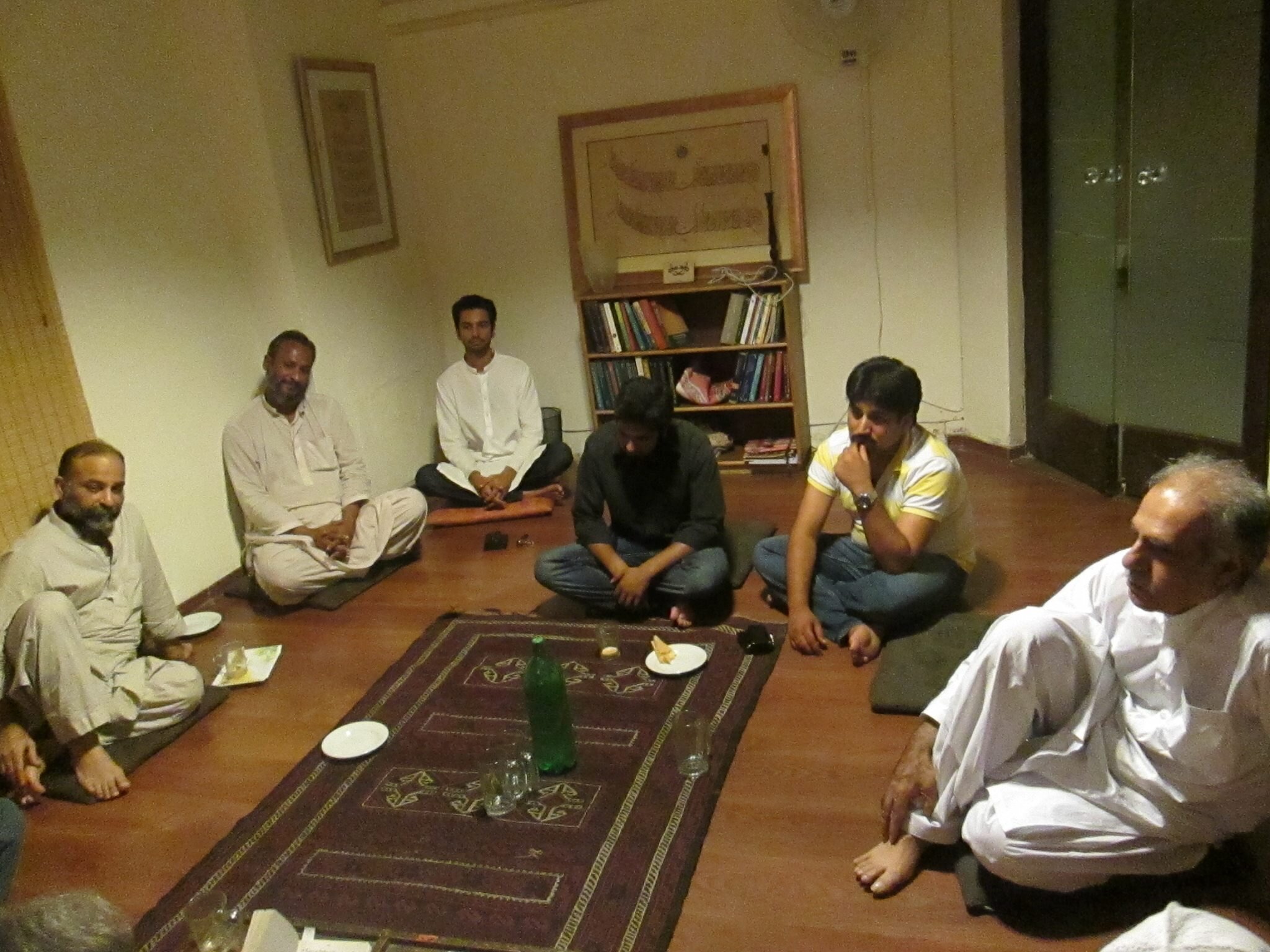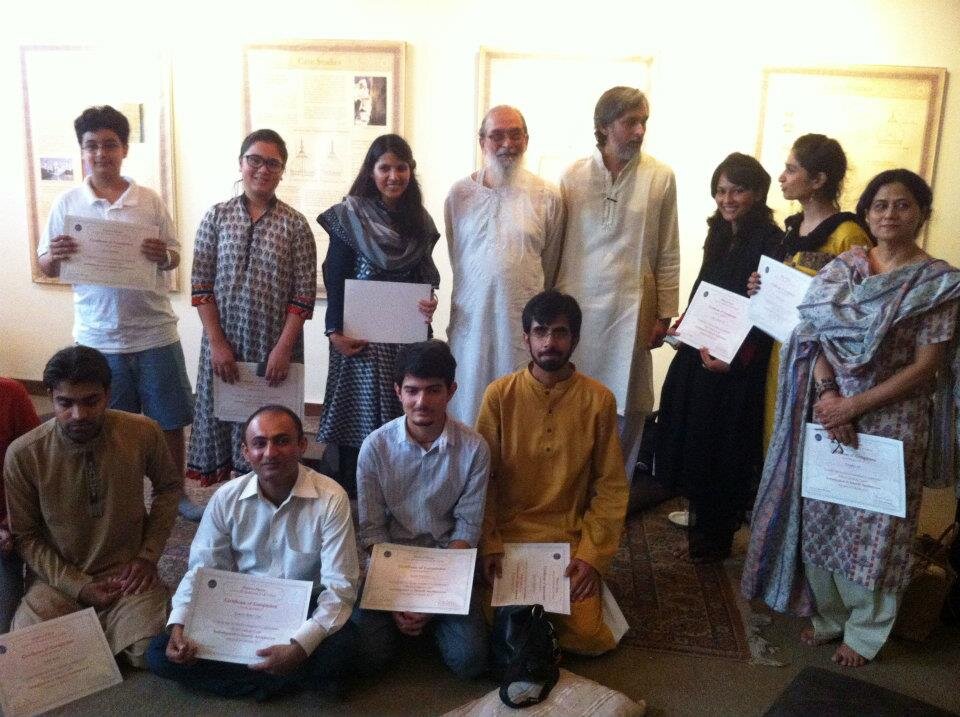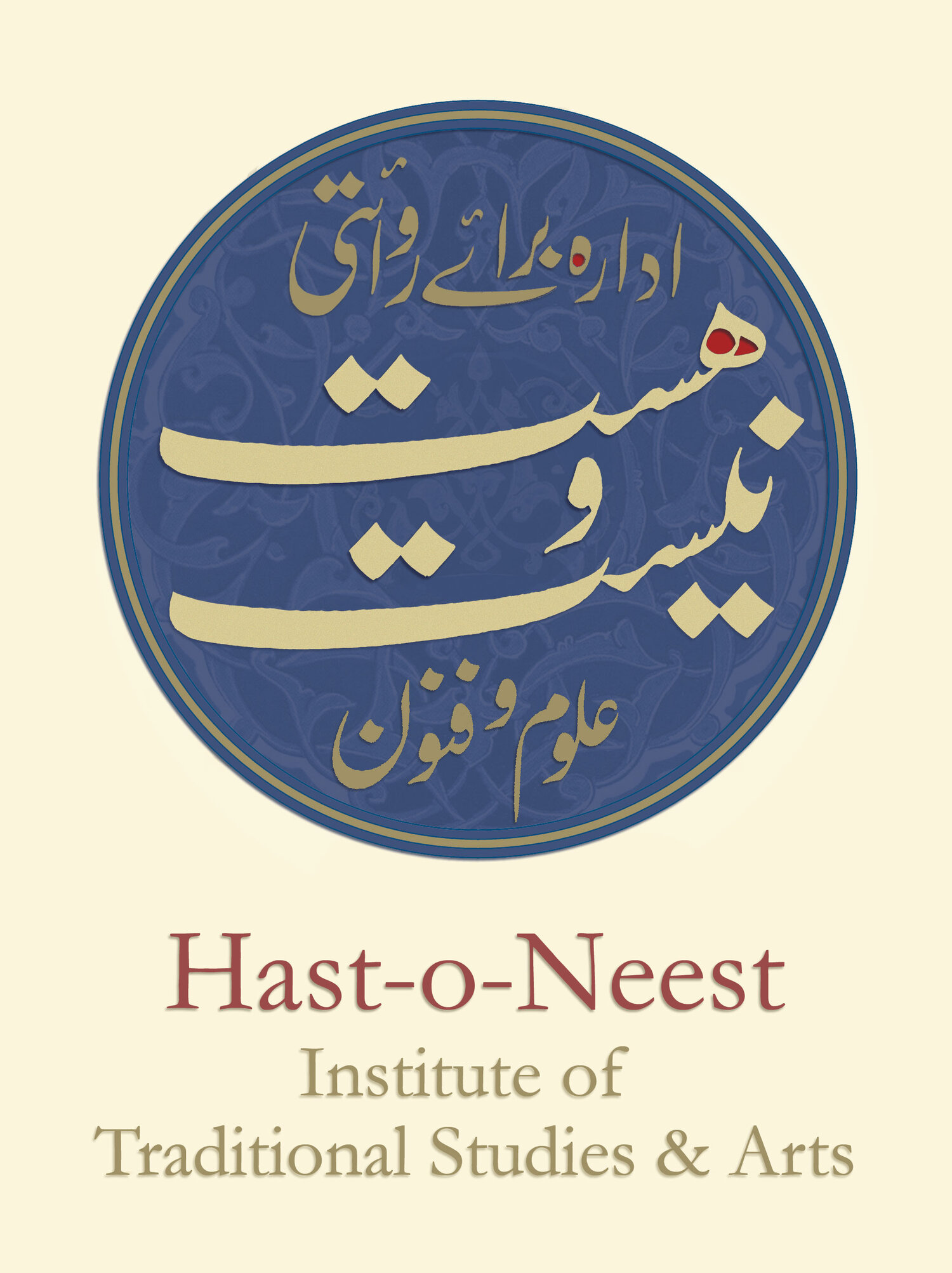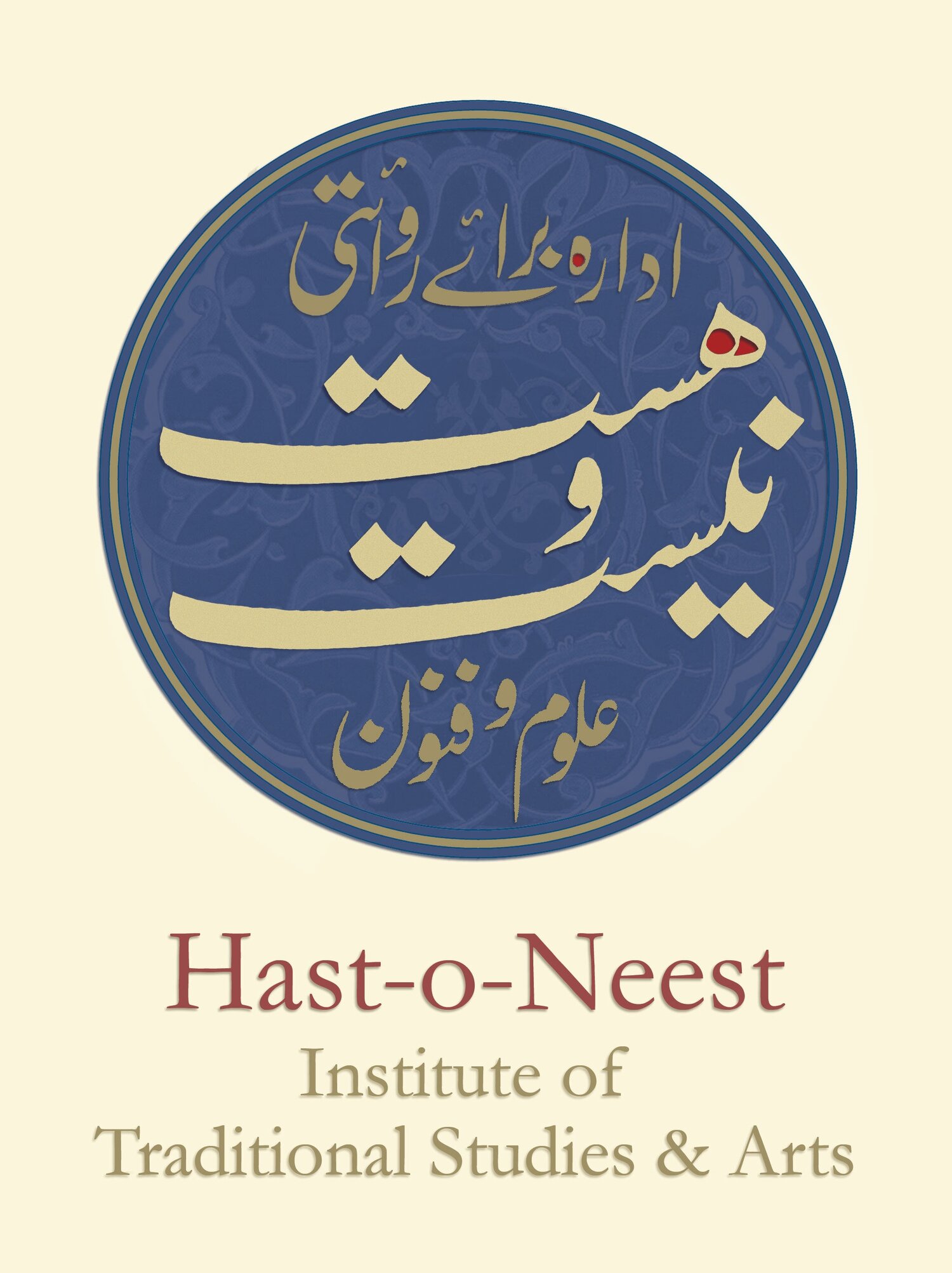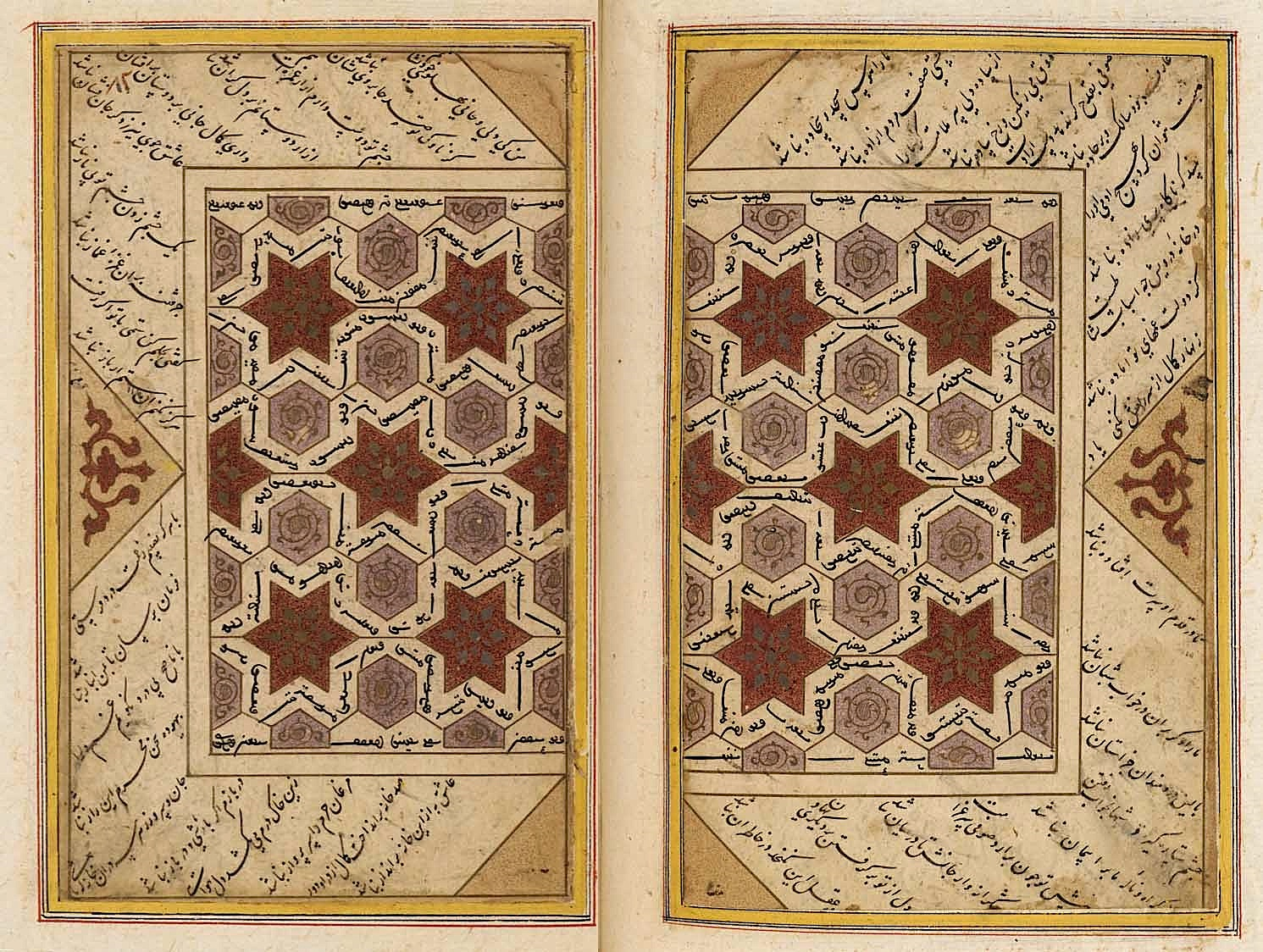
Baytunur. Trust.
Beginning informally in 2005 in the form of guest lectures and Arabic classes - with late Mufti Ghulam Sarwar Qadri - Baytunur Trust was formally registered first in 2006, and re-registered under the new Trust Law of 2020 in 2023.
From 2006 to 2009 with support from Iqbal Academy Pakistan’s Former-Director Suheyl Umar, various academics and scholars including Mr. Abbas Hussain, Dr. Ejaz Akram & Dr. Syed Rizwan Zamir, the Trust organized a number of seminars, workshops and discussion groups on traditional, religious and contemporary discourses on a variety of topics including ‘Islam Seminars, ‘The Religion & Culture Debate’, ‘The Art of Islam’ and ‘Science of Islam Seminars’.
In 2010 Hast-o-Neest Centre for Traditional Art & Culture was established in what was formerly ‘Crow Eaters Gallery’ housed in a charming heritage building on the Mall, with support of the building owner Isphanyar Bhandara of Murree Brewery.
Hast o Neest earned respect and appreciation in providing a forum that promoted discussion and dialogue on our spiritual and intellectual traditions, as well as the traditional arts, and constant interaction with students of the nearby prestigious institutions of higher education National College of Arts, Punjab University & Government College University.
The need for an institute focusing on our intellectual, literary and artistic traditions was a natural progression, hence Hast-o-Neest Institute of Traditional Studies & Arts replaced the Centre in 2015.
Vision.
Hast-o-Neest’s objective is to create an environment of learning with teachers who can transmit traditional knowledge in its authentic form and spirit. Courses are developed by Hast-o-Neest in consultation with teachers, making each course or study-circle a creative exercise which more often than not leads to a continuous process of development for each course as well as further courses, and study-circles.
Hast o Neest aims to engage, research and explore tradition within specified disciplines, serving to invest intellectual, literary, artistic traditions - that tend to be forgotten or marginalized in the modern world.
The Trust is supported by regular donations by its Trustees as well as income from the Trust's various activities and projects.
The Trust does not own any property and its head office is generously donated by trustees.
The Trust is registered under the Trust Law of 2020, and maintains an account at National Bank of Pakistan. Its accounts are audited annually by an external auditor.
Board of Trustees.
Support.
From its humble beginnings, Hast-o-Neest has enjoyed and continues to enjoy the support of many friends and well-wishers who contribute their time and expertise. Hast-o-Neest would like to acknowledge with gratitude the following for their support and encouragement during the initial years:
Iqbal Academy Pakistan & Suheyl Umar, Kohinoor Weaving & Aamir Fayyaz Sheikh, Dabistan-e-Iqbal & Mian Iqbal Salahuddin, Allied Marketing & Ahmed Hasnain, Murree Brewery & Isphanyar Bhandara, Faizal Naqvi & The Lyceum Karachi.
Dr. Ejaz Akram, Dr. Shahzad Qaiser, Dr. Mujtaba Piracha, Abbas Hussain, Ali Habib, Shahid Khan, Maheen Khan, Khawar Mumtaz, Kamil Khan Mumtaz, Murad Khan Mumtaz, Qasim Jafri, Syed Ali Asad Naqvi, Syed Hurr Abbas, Khwaja Salman Yasin, Owais Soharwardi, Tariq Sufi, Jimmy Engineer, Azhar Iqbal, Sahibzada Asim Maharvi, Raheel Ahmed, Muhammad Wasif, Kausar Ali, Gen.(Retd.) Humayun Bangash, Ehsan Bajwa, Riaz Kamlani, Zarminae Ansari, Kamran Ahmed, Asad Fayyaz Sheikh, Shabnum Abdullah, Ghufran Ahmed, Fiaz Ahmed Khan and many more.
CONTACT THE OFFICE
Tel: +92 300 849 3170 (Taimoor Khan Mumtaz)
Email: hast.o.neest@gmail.com
LOCATION | LAHORE, PAKISTAN
3, Iftikhar Ahmed Malik Road, Shariff Colony, Canal Park, Gulberg II.
Stay Updated | Emailing Lists, Whatsapp Groups

